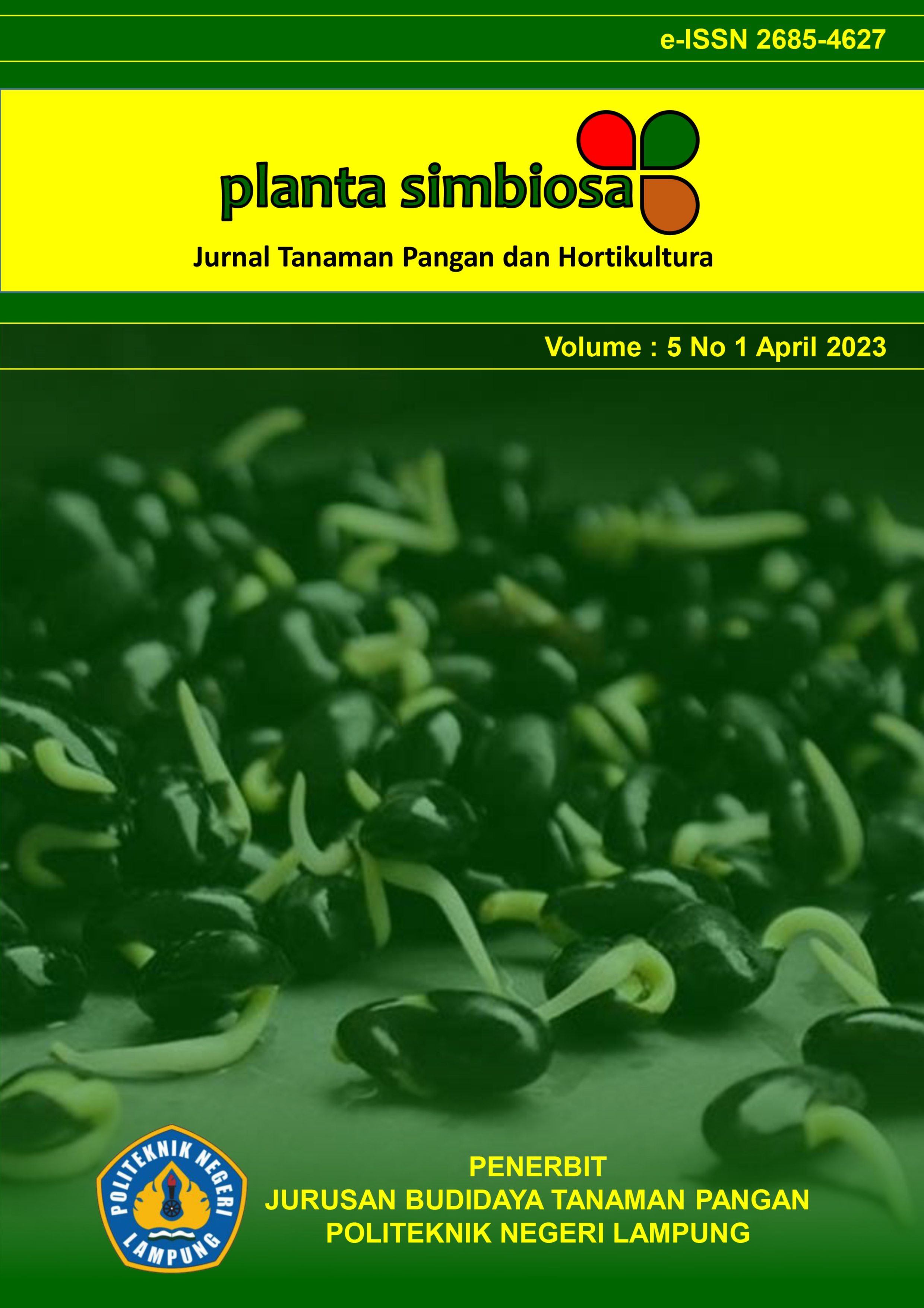Growth and Yield Responses of Male F1 Jantan Variety of Purple Sticky Corn (Zea mays L. var ceratina) Due to the Combination of Plant Population and Organic Fertilizer Dosage
DOI:
https://doi.org/10.25181/jplantasimbiosa.v5i1.2989Abstract
The research aims to determine the effect of different combinations of plant population and organic fertilizer dosages on the growth and yield of the best male F1 variety of purple sticky corn. This experiment used a complete randomized block design consisting of six treatments and repeated four times. The treatments consisted of: A. (66.666 plants/ha with 5 ton/ha); B. (66.666 plants/ha with 10 ton/ha); C (53.333 plants/ha with 5 ton/ha); D (53.333 plants/ha with 10 ton/ha); E (40.000 plants/ha with 5 ton/ha); F (40.000 plants/ha with 10 ton/ha). The observed plant responses consisted of: plant height, leaf area, plant dry weight, weight of cobs with husk per plant, weight of cobs without husk per plant, cob length, and cob diameter. The results of this study showed that different combinations of plant population and organic fertilizer dosages had an effect on the plant height, plant height, leaf area at, plant dry weight, weight of cobs with husk per plant, weight of cobs without husk per plant, cob length, and cob diameter of male F1 Jantan variety of purple sticky corn. The combination of 40,000 plants/ha plant population with 5 tons/ha of organic fertilizer gave the best yield for male F1 Jantan variety of Pulut Ungu corn plants.Downloads
Download data is not yet available.
Published
2023-04-28
How to Cite
Rochman , F. ., Priyadi, P., Budiarti, L., & Sutrisno, H. (2023). Growth and Yield Responses of Male F1 Jantan Variety of Purple Sticky Corn (Zea mays L. var ceratina) Due to the Combination of Plant Population and Organic Fertilizer Dosage. J-Plantasimbiosa, 5(1), 42-54. https://doi.org/10.25181/jplantasimbiosa.v5i1.2989
Issue
Section
Artikel








